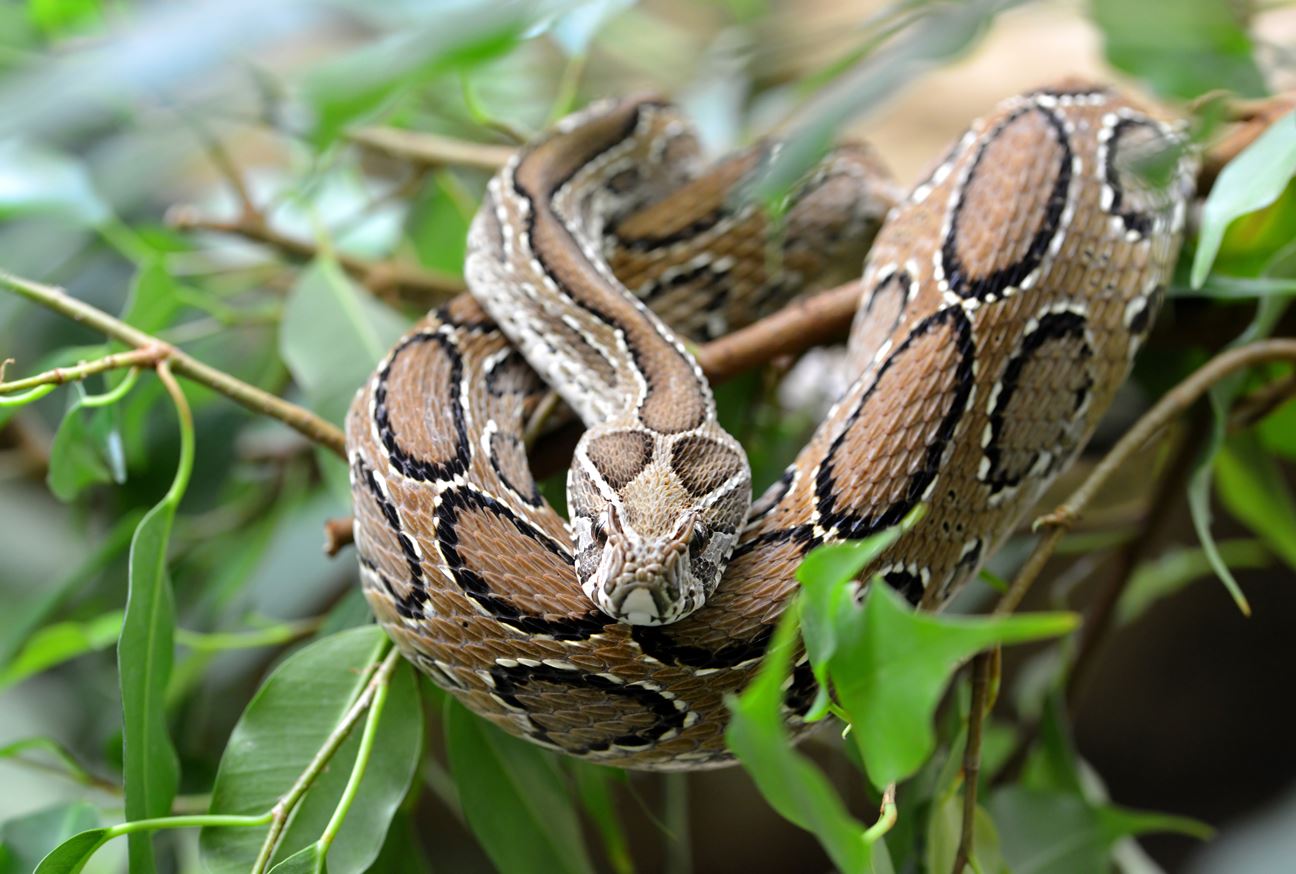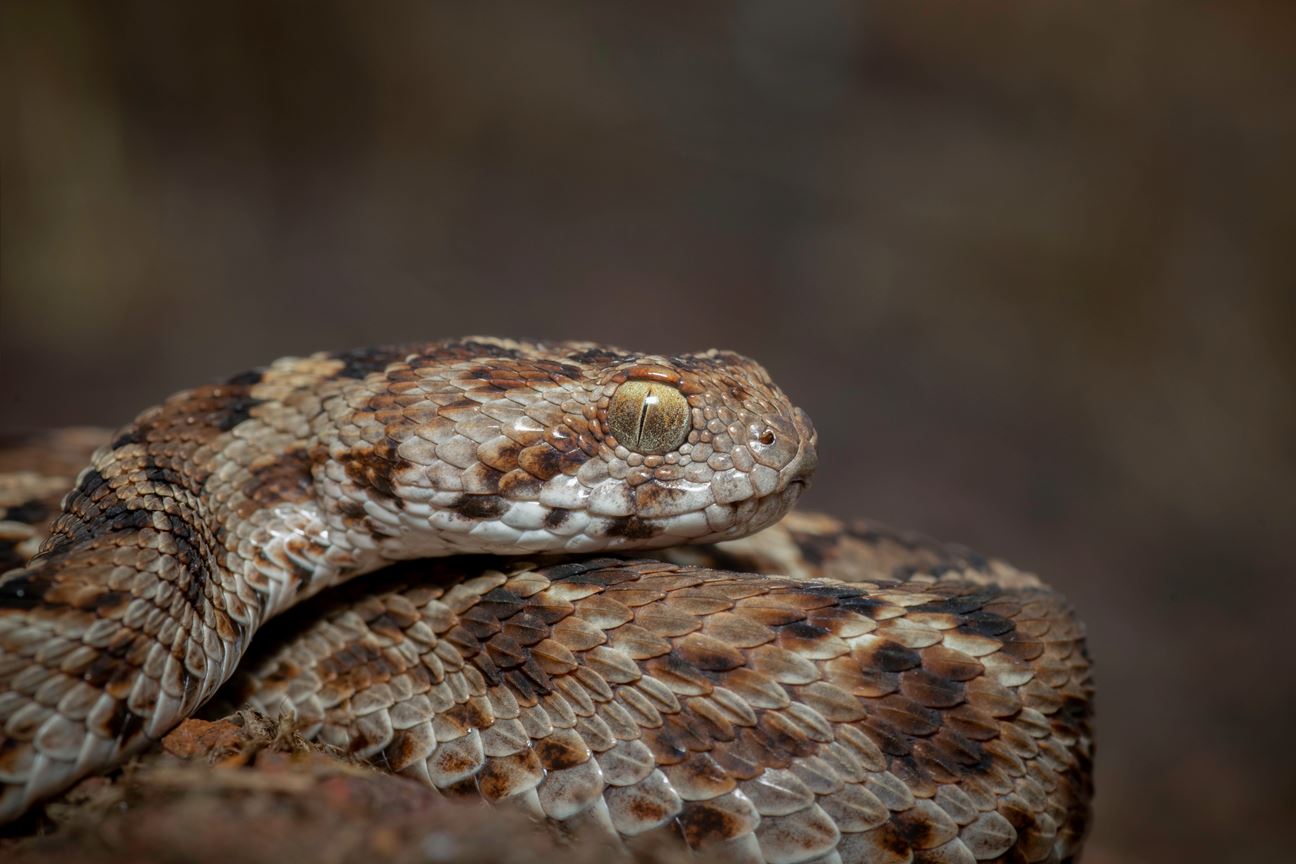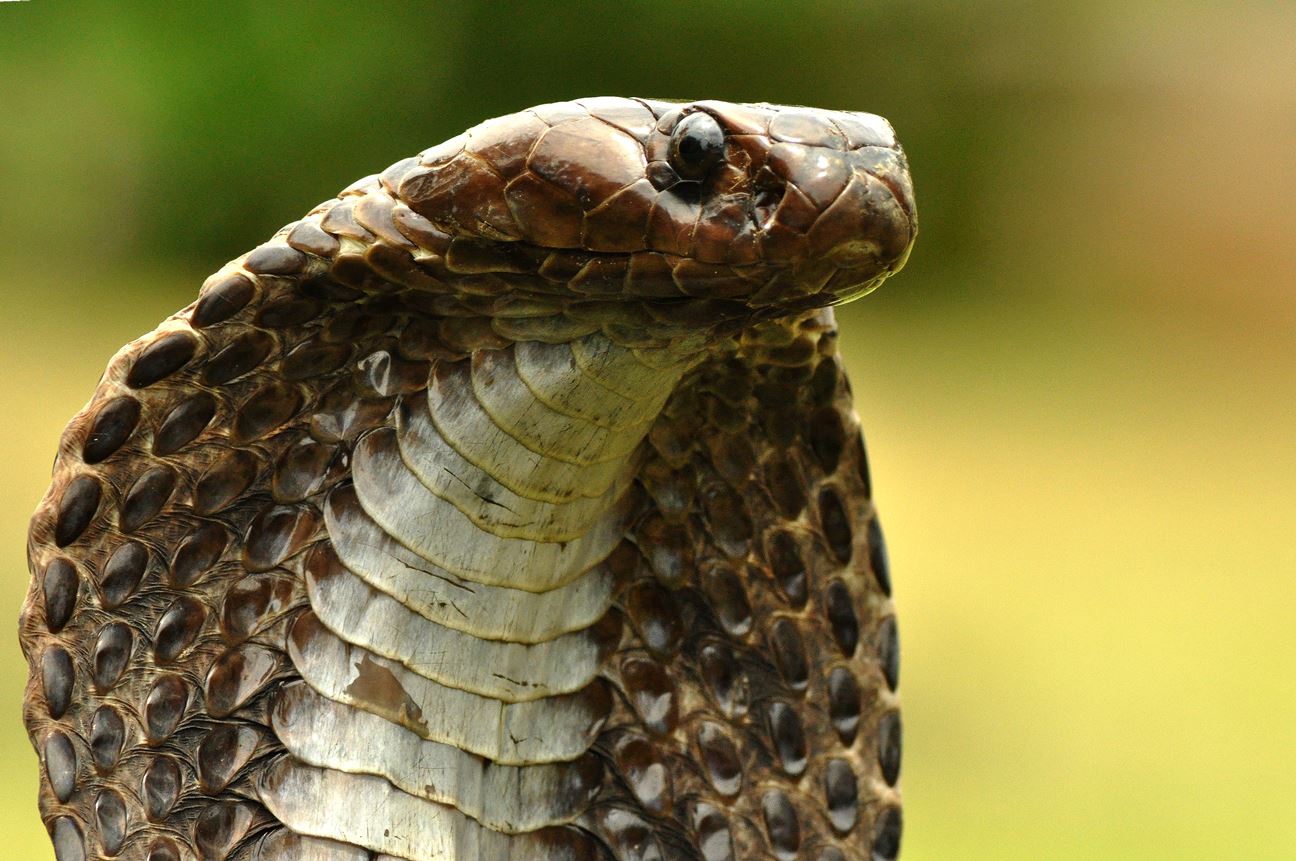Their reputation is deadly, literally. Find out all about the four common varieties of venomous snakes in India.
India, as a tropical country, is home to 270 snake species. That sounds like a lot, right? Thankfully, only 60 of these are venomous. Every year, in India, close to two lakh people fall victim to venomous snake bites, which then result in a few thousand fatalities. Most of these deaths can be attributed to the deadly ‘big four’. Unbeknown to most of us, these snakes are found in almost all possible habitats, including human habitations. And these are exactly the ones one should look out for.
The Big Four of India:
These snakes are collectively referred to as the “Big Four” of India since these four cause the highest number of medically significant snake bites. The ‘big four’ are known to make themselves at home in many homes in rural India. Luckily for us, a snake antivenom is widely available in India and is known to effectively neutralize the venom of these big four. In no particular order, here are India's Big Four:
The Russell's Viper (Daboia russelii) or Indian Russell's Viper of the Viperidae family is the most dreaded snake in India, mainly because when this snake strikes, it will inject a maximum venom dose. Most snakes, when they bite, may not always spew venom. This kind of bite is called a dry bite. But in the case of Russell’s Vipers, there is almost never a dry bite.

A Russell's viper on A branch of a tree
These snakes are fast and vicious and can strike prey that is up to 5 feet away. And they account for thousands of deaths every year in India.
Their robust bodies are made up of heavily keeled scales. The colour is usually yellowish-brown with a striking three rows of a chain pattern. These are bordered with black rings, making the snake highly visible. Their triangular heads look like a V and have vertical pupils like many other vipers.
While this snake has many regional names all across India, it is named after Scottish herpetologist Patrick Russell. Russell, after many experiments on chickens and dogs, confirmed that these snakes were highly venomous. Russell’s Vipers are found all across India, but rarely in the northeastern part of the country. They like to thrive in drier areas and avoid wet environments and dense rainforests. They inhabit thick bushes and leaves, scrub jungles, and also farmlands. In areas with high temperatures, they take shelter in rodent burrows and termite mounds. Russell's Viper is exclusively terrestrial and hunts for the prey during nighttime only. Interestingly, this species can display cannibalism but primarily feed on rodents and sometimes lizards.
The Russell’s Viper is a highly evolved species. One, they come with the most advanced venom dispatching technique where just a jab is enough, unlike their counterparts who need to hold on to the prey while injecting venom. And two, their venom is a cocktail of toxins. Symptoms manifest at a striking rate, including spontaneous haemorrhage, renal failure, intravascular coagulation and depletion, and shock. Unlucky for the victim, the symptoms continue even after they have survived the initial bite. The venom is known to further damage the kidneys, which can prove fatal.
Smallest of all the four, the Saw Scaled viper, or Echis carinatus, are responsible for the largest number of medically significant snakebites and the resultant deaths in India. These enigmatic vipers have five different sub-species that live in India, and they vary to quite a degree. For example, the ones found in the Western Ghats of southern India are tiny, growing to a maximum length of only 40 centimetres. But the ones found in the desert ecosystem of Rajasthan can grow almost twice the size. While they are commonly found all over India, Saw Scaled vipers are most likely to be found throughout peninsular India and northwest India. They prefer open bushy areas, rocky terrains, and jungles.
The Saw Scaled vipers are keeled all over their bodies. This means they have a raised ridge in the middle of each of the scales that are oriented upwards. So these snakes appear not smooth but rather rough. Their short and stout bodies come with a variety of colours and patterns—mostly whitish spots are seen on their greyish, brick reddish, pale brown, or olive-coloured bodies. Their heads are triangular, with broader necks and vertical pupils.
 A Saw Scaled Viper's distinctive keels and vertical pupils
A Saw Scaled Viper's distinctive keels and vertical pupils
Their nature can be are extremely aggressive and inconspicuous. When threatened, these vipers tightly bunch their bodies in the shape of an S to make an attempt to move away from the threat. This movement can cause a rough and scratchy, raspy sound due to the rubbing of the scales together. If one hears this, it could very well be an indicator to move as far as possible from the snake. Their smaller bodies help them move in sidewinding locomotion on surfaces that offer very little surface tension. These vipers usually come out at twilight to hunt for food and are known to feed on small mammals, birds, lizards, and even other snakes.
These fast venomous snakes are not easily seen. One can expect them to hide under a small leaf or underneath the sand. This makes them hard to spot and more likely to be stepped on. And it has a potent venom that is haemotoxic (resulting in the destruction of red blood cells) and cytotoxic (localised dismantling of cell structure) in nature. If bitten, the victim can experience severe tissue and organ damage which may prove fatal. As many as 8 different polyvalent and monovalent antivenoms are available and many more in research.
The common kraits (Bungarus caeruleus) only come out at night, looking for their prey in the dark of the shadow. These snakes like to keep away from light and activity as much as possible. And of the four, the common krait, or the blue krait, has the reputation of having the most potent venom. These snakes are commonly spotted throughout peninsular India—from forests, grasslands, rocky terrain, to even human habitation.
It is easy to identify one. Their long cylindrical bodies can grow between an average of 3 to 4 feet. The skin is glossy, either jet black or bluish-black, with twin white bands all over it, with usually no bands around the neck area. Its underbelly is white, its eyes are small and black, and the tongues are exceptionally wide forked.
 The beautiful Sind Krait
The beautiful Sind Krait
In addition to being nightcrawlers, common kraits love small spaces like crevices in walls and brick piles - features fairly common in the houses of India, and tree mounds. In rural India, many people sleep on the floor and many times also outside under the open sky. Kraits are known to occasionally bite people, a phenomenon many believe is an act of self-defence while a few others believe is predatory. While there is no evidence supporting the predatory bite, one reason that comes to mind for the snake striking out in a predatory way is that it misidentifies the victim for food. This also explains why predatory bites are more intense than defensive ones. Interestingly, this is the number one reason for kraits and human conflict. As for their diets, kraits are known to eat other snakes and smaller animals like lizards, rodents, and insects.
Their venom is known to be the most potent of all the snake varieties found in India! It contains a presynaptic neurotoxin element that can cause a nervous system shutdown in the victim. No, death does not happen in minutes. And many people reach the hospital only between 4 to 5 hours after the bite. The reason being this: the heart is not controlled by the central nervous system and will still continue to beat, buying victims some time. Sind Krait (Bungarus sindanus), a variety of krait widely found in Maharashtra, Gujarat, Rajasthan, Uttar Pradesh, and Bihar, and has venom 5 times more potent than the common krait.
Indian Cobra or the Spectacled Cobra
Indian cobra, also called Spectacled Cobra or Binocellate cobra or Asian cobra, is not to be confused with the King cobra. While formally these two were considered being of the same species, with almost similar geographical distribution, as a member of genus Naja it is the Indian cobra that makes for a genetically true cobra. As part of the ‘big four,’ the Indian Cobra is responsible for many snakebites all across India.

Indian or Spectacled Cobra
Except for the high altitude areas and deserts, Indian cobras are distributed all across India. While the north-Indian cobras are darker brown, some individuals found across northwestern India can also be black. On the other hand, the south-Indian cobras are yellowish-brown and exhibit the most distinct round hoods. These hood marks are located at the rear end of the Indian cobra's head and look like two eyes (or ocelli) that are connected by a curved line. A cobra’s head is elliptical and covered in many smooth and shiny scales. These slender snakes can be slightly heavy-bodied and can grow anywhere between 3 and 5 feet long.
Indian cobras are solitary and diurnal creatures and are known to find shelter in tree hollows, termite mounds, and small dens. Like most other snakes, Indian cobras, too, feed on birds, rodents, frogs, and lizards. While they are primarily terrestrial, cobras can climb on trees and swim in the water in search of food. Unlike their counterparts, Indian cobras can be active during the day. Interestingly, they usually hunt in the darkness.
When threatened or provoked, these snakes show off a characteristic posture where they expand their distinctive hood and raise the front of the body to appear bigger. They will stay extremely focused on the prey during such a confrontation. Cobras also hiss loudly, which usually should be taken as a warning. The Indian cobra's venom is highly venomous and contains neurotoxin (damaging to the nerve tissue) and cardiotoxin (damaging to the heart). Symptoms like respiratory failure or cardiac arrest can start to appear between 30 minutes to 2 hours after the bite. Like with other snakes, an antivenom is widely available in public clinics and hospitals in India.
As the most commonly known and seen snake in India, snake charmers usually try their antics on the Indian cobra. Now outdated, but the venom of these young cobras was once used as a substance of abuse. Vasuki, an Indian cobra, is respected in Hindu mythology and is seen coiled around the neck of Lord Shiva.
Even today, most of the human population lives in rural India—most areas of which are surrounded by plenty of wildlife. Human relationships with snakes have been sort of complex and ever-changing. During much of human history, if not all, they have considered each other predator and prey. Human encounters with the ‘Big Four’ will continue to happen. What’s needed is educating the public in ways to minimise human-animal conflict and live in harmony with these big four.